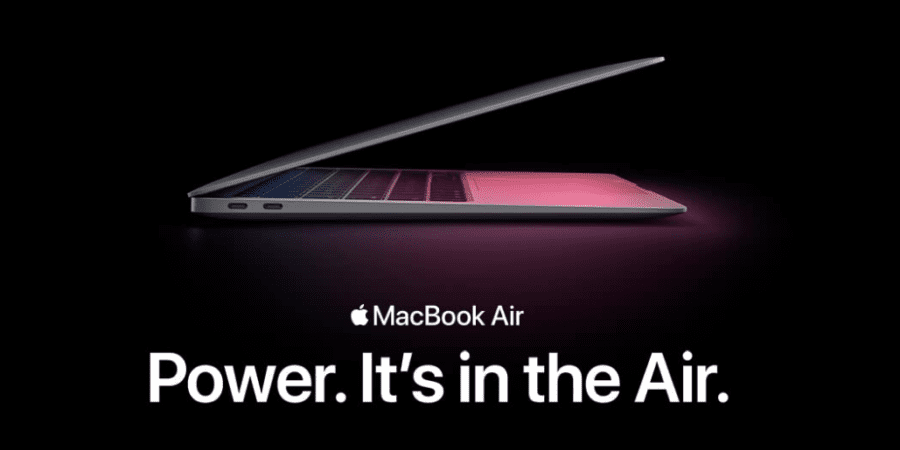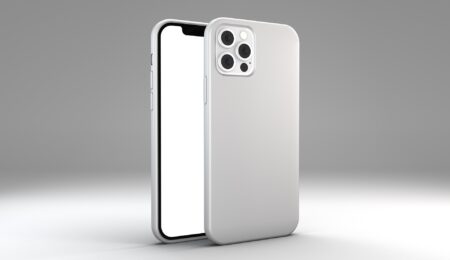As laptops have become more powerful, they have also been getting more expensive. Apple surprised everyone in October 2020 when it introduced a new MacBook Air laptop that is not only less expensive than the previous generation, but even less expensive than many Chromebooks (discount PC laptops running Google’s browser-based Chrome OS). The result has been an impressive spike in sales for this category of laptop.
The Intel Core M1 processor at the heart of the new MacBook Air has played a big role in powering this success, especially among value-oriented consumers who are not overly concerned with having their laptops perform cutting edge tasks. While it lacks performance for computing intensive applications like video editing, it’s more than sufficient for web browsing, word processing and email tasks. It’s also much more energy efficient than other laptop processors: in sleep mode the MacBook Air still uses just 2 watts of power, and when in use it typically consumes up to 12 watts which is much less than even the latest Intel processors sold in the cheapest laptops.
The MacBook Air with Core M1 has not been without its critics. Critics point out that it runs hot and doesn’t have the battery life of previous models, but in everyday use most users report that this is a non-issue. The Core M1 processor can dynamically increase or decrease its clock speed depending on how demanding the task at hand is, and under normal circumstances most users report that it feels about as fast as a Core i3 processor from earlier this decade.
One of the biggest complaints about the MacBook Air is that it does not allow for much customization or expansion. In most PCs you can swap out RAM and hard drives, but these components are fixed in place with the MacBook Air which may be an issue for some users.

MacBook Air with M1: Features and Specifications
To help you decide if the MacBook Air is right for you, we’ll take a look at some of its more notable features.
- CPU: Intel Core M1 (dual-core) @ 1.0 GHz or higher depending on model/market
- Graphics: integrated chipset with embedded DRAM shared with main memory
- Display Resolution: 1440×900 pixels
(MacBook Air supports up to 2 external displays with resolutions up to 1920×1200)
- Ports: 1 x USB 3.0, 1 x Thunderbolt , 1 x audio line in, headphone out
- Screen: 12″ LED backlit TFT active matrix
- Battery life: 5 hours of battery life for typical internet use with wireless enabled
- Weight: 2.37 lbs / 1.07 kg (depending on version)
- Size: 11.8″ wide, 7.56″ deep, 0.11-0.68″ thick
- Mac OS X v.10.11 “El Capitan”
In the past few years Apple has been shifting from Intel to its own proprietary designs so it can have greater control over the apps that run on its devices, and this trend shows no sign of letting up. With a Core M1 processor inside, you’re guaranteed compatibility with the latest apps.
MacBook Air with M1: Pros and Cons
Pros:
+ Inexpensive for a laptop computer
+ Uses very little power when idle or asleep
+ Runs cool, so useful in hot climates
+ Thin and light weight for its size.
Cons:
– Only 4 GB of main memory on most models, which is not expandable (this has been an issue for some users)
– Low storage capacity: 128 GB or 256 GB on most models. This has been an issue for some users who store a lot of photos, video or music files.
– No built-in optical drive (however this is not much of an issue now that cloud storage services are so prevalent)
MacBook Air with M1 Review: Conclusion
The MacBook Air is not the most powerful laptop on the market, but if you’re looking for a more affordable option it may be a good fit for your needs. It’s thin and light, with a 12″ screen that’s great for word processing and Internet browsing. Its Core M1 processor runs cool and uses very little power when in sleep mode or idle, so it’s perfect for those who use their laptops in hot climates.
The biggest complaints about the MacBook Air revolve around its fixed components: you cannot swap out its RAM and hard drive (although you can expand storage by using a solid state drive that uses USB) which may be an issue for power users.
Buy it on Amazon:
You may also be interested in:





Leave a Reply